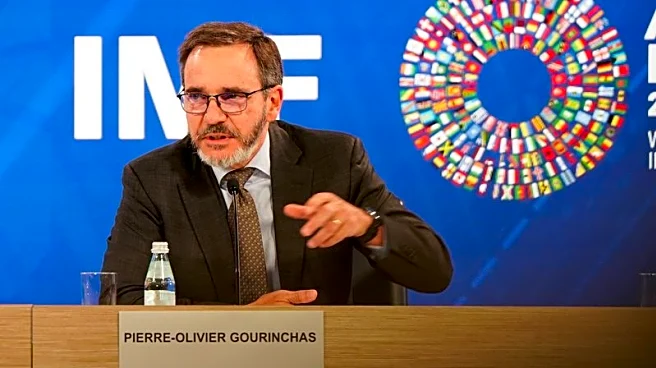What's Happening?
Gold prices have reached a historic high of $4,000 an ounce, driven by geopolitical instability and a weakening U.S. dollar. This surge marks gold's best performance since 1979, a year characterized by significant economic instability. Investors are increasingly turning to gold as a safe-haven asset, reflecting skepticism about contemporary monetary policy and concerns over the Federal Reserve's ability to maintain a strong dollar. The rise in gold prices is also influenced by global events such as Russia's invasion of Ukraine and subsequent sanctions, which have prompted countries to seek assets that cannot be easily frozen. Additionally, the ongoing debate over the independence of the U.S. central bank is contributing to the demand for gold.
Why It's Important?
The surge in gold prices highlights a growing distrust in traditional financial systems and the U.S. dollar, as investors seek more stable and independent assets. This trend could have significant implications for the U.S. economy, as it suggests a potential shift away from dollar-denominated investments. The increase in gold prices also reflects broader concerns about inflation and geopolitical risks, which could impact global economic stability. As countries and investors move towards gold, it may signal a lack of confidence in the ability of central banks to manage economic challenges effectively.
What's Next?
The continued rise in gold prices may lead to increased investment in other hard assets, such as cryptocurrencies, which are also seen as alternatives to traditional financial systems. The U.S. and other countries may need to address the underlying economic and geopolitical issues driving this shift to restore confidence in their currencies. Additionally, the debate over central bank independence could intensify, potentially influencing monetary policy decisions and economic strategies.
Beyond the Headlines
The current gold rush underscores a broader cultural and economic shift towards skepticism of institutional power and a preference for tangible assets. This trend may reflect deeper societal concerns about the sustainability of current economic models and the potential for future financial crises. As investors continue to seek security in gold, it may also indicate a growing interest in historical investment strategies and a return to more traditional forms of wealth preservation.













